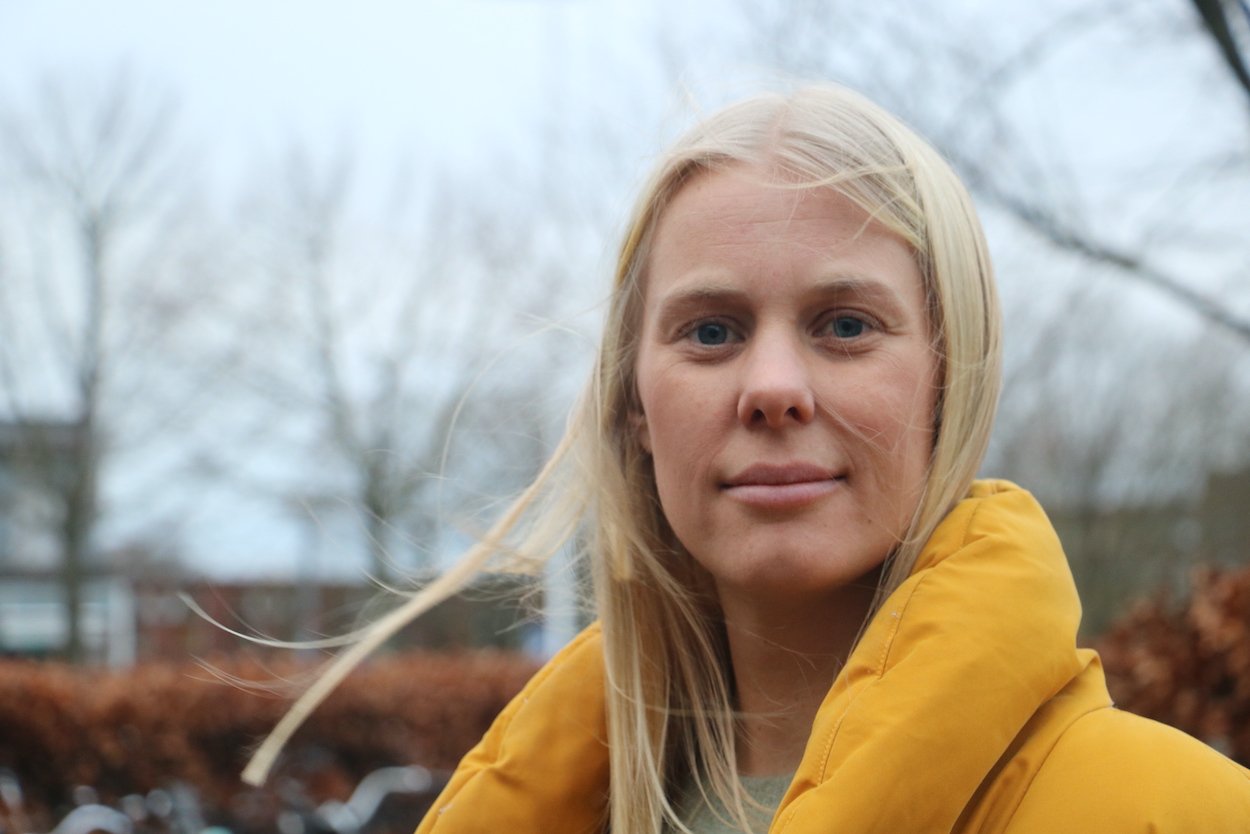Abstracts
-
13.30
Session Chair: Lars Fogh Mortensen, European Environment Agency and STEPS Board member
Perspectives and Insights from the OECD
Kumi Kitamori, Environment Directorate, OECD
The flexibility and versatility of plastics is difficult to match. However, escalating levels of plastics production and use, particularly in short-lived applications, have led to increasing waste levels and pollution of this all-pervasive material in recent decades. Plastic pollution can be found in the water we drink, the air we breathe and the food we eat, posing an increasing threat to the environment and human health, with consequences for sustainable economic growth and human well-being. Without more ambitious policies, the proliferation of plastic production, use and waste will further expand by 70% by 2040.The ongoing negotiations to develop an international legally-binding instrument on plastic pollution provide a unique opportunity for governments to create a powerful global response to this environmental issue. Building on the modelling framework of the OECD’s flagship Global Plastics Outlooks, the latest findings from new policy scenarios for eliminating plastic pollution by 2040 are intended to assist these negotiations by presenting a viable path towards ending plastic leakage to the environment by 2040.
Since 2000, we have seen plastics production, use and waste more than double with significant amounts of plastic leaking into the environment each year. Business as usual is unsustainable while plastic flows and their environmental impacts continue to rapidly increase. As governments around the globe come together to tackle this issue, OECD analysis sheds light on the environmental benefits and economic costs of alternative policy scenarios with varying levels of ambition.
Environmental and Climate Impacts from Plastics and Pathways towards Circular Plastics – A Perspective at the Start of a New European Policy Cycle
Daniel Montalvo, European Environment AgencyPlastics play an essential role in modern society. However, their value chain is currently unsustainable, contributing to the generation of climate changing emissions and increasing waste and pollution. The consumption and production of plastics negatively affect the environment and spur climate change. More marine litter is washing up on Europe’s beaches, high levels of microplastics are entering the environment, and already high levels of greenhouse gas (GHG) emissions from the value chain are likely to increase as a result.
The circularity of plastics material is increasing at a slow pace. Nevertheless, there are encouraging trends: mechanical recycling capacity is increasing, EU exports of plastics waste are decreasing, bioplastics production capacity is growing slowly, as is the use of recycled plastics.
Reducing such impacts while retaining plastics’ usefulness requires a shift towards a more circular and sustainable plastics system. This shift can be accelerated by scaling up good practice examples and making improvements across the plastics value chain. Three pathways can lead to a more circular, sustainable plastics system: smarter use, increased circularity and renewable material. Good practice examples for each of these pathways have been found across Europe among business, policymakers and citizens. However, most of these examples are small-scale and need to be expanded and more widely adopted to make a significant impact.
Plastics pollution and the planetary boundaries framework
Bethanie Carney Almroth, Gothenburg UniversityBethanie Carney Almroth, co-authors: Patricia Villarrubia-Gómez, Marcus Eriksen, Morten Ryberg, Sarah Cornell
Plastics have become an international governance priority because of their extensive and resource-intensive production, uncontrolled environmental releases, and failure to control the chemicals within the materials. This paper examines the evidence that plastics have exceeded the planetary safe operating space, discussing how pollution by plastics and their additives affects multiple Earth system processes along the impact pathway from resource extraction and production to release to environmental fate and impacts. Multiple lines of evidence are necessary to capture the complex reality of these novel entities. Attempts to quantify a planetary boundary in isolation would be detrimental to the global governance of plastics. We demonstrate causal links between plastics and other major environmental problems at global scale, exacerbating the consequences of breaching other planetary boundaries, especially climate change and biodiversity loss. We propose ways to translate these assessments into biophysically-defined control variables for the planetary boundaries framework, as a way to measure, monitor and mitigate global plastics pollution. Efforts should be oriented towards further developing and monitoring a set of control variables that describe the actual state of the system along the impact pathway. We call for experts and policymakers to take urgent action, recognizing plastics pollution not only as a waste management problem but as an integrative part of climate change, biodiversity, and natural resource use policy.
15.00
Session Chair: Lars J. Nilsson, Lund UniversityPET Recycling: From Enzyme and Process Optimization to an Industrial Plant
Alain Marty, Carbios, Clermont FerrandPlastics are found everywhere in our daily life due to exceptional properties. The worldwide market reaches 460 million tons. However, they represent a major environmental issue with 125 million tons of generated plastic waste annually. Only 10% of collected plastics are recycled, and, at best, plastic wastes are incinerated but an unacceptable quantity are lost in nature, with 9 million tons ending each year in the oceans.
Carbios, a young innovative green chemistry company, in collaboration with the laboratory TBI (Toulouse Biotechnology institute; INSA/CNRS/INRAE; developed an enzymatic process to recycle one of the main plastics, PET (~100 million tons per year). A first breakthrough was reached with the optimization of an extraordinary PETase used to break down PET returning to monomers (Nature; Vol. 580 Issue 7802, 9 April 2020). Since then, we continue to optimize this enzyme, to improve kinetics and yields and the performances of our best enzymes will be presented. The scale-up of the process in an industrial demonstrator will be presented with a 20m3 reactor and all the downstream processing to purify both terephthalic acid and ethylene glycol.
Carbios is building a first industrial unit in France, operational in 2025, which will recycle 50,000 tonnes of PET waste per year and some data will be presented.
Key Words: PET recycling, enzyme, PETase, industrial plant.
Plastics in the Materials Transition – Where Do We Go from Here?
Mark Conrad, Material EconomicsThis talk presents a forward-looking view of how sustainable plastics and chemicals fit into a business world grabbling with a backdrop of enormous geopolitical tensions, rapid technological change, economic uncertainty and a warming planet. It provides a perspective on how businesses are navigating current uncertainty and why adapting to sustainability can be of existential importance to the European petrochemical industry, and concludes with a vision for the future of the industry.
In Search of Common Ground? Towards a Global Plastics Treaty
Johannes Stripple, Karl Holmberg, Lund University and Tara Olsen, Copenhagen UniversityIn 2022, the United Nations Environmental Assembly (UNEA) adopted resolution 5/14, giving mandate to UN Member States to start negotiations toward an international legally binding instrument on plastic pollution. This presentation explores the position that states have taken throughout the negotiation process and provides insights on the current state of affairs as we head into the final round of negotiations in Busan (South Korea) in November 2024.
Synergies among multilateral environmental agreements to maximise climate benefits across the plastics life cycle
Natalia Skripnikova, Expert, Transboundary Governance & Environmental Crime Programme, GRID-Arendal, natalia.skripnikova@grida.no
Plastic pollution and climate change are deeply interwoven challenges within the triple planetary crisis of climate change, biodiversity loss, and pollution. Greenhouse gas emissions are generated throughout the entire life cycle of plastics, from sourcing to end-of-life. The Basel, Stockholm, and Rotterdam Conventions, along with the Montreal Protocol and the United Nations Framework Convention on Climate Change, collectively address the interconnected aspects of plastics production, consumption, and climate change.
Addressing the plastic pollution crisis requires an international response through a global framework that covers the full lifecycle of plastics, from production and design to end-of-life management, complementing existing initiatives and addressing gaps to eliminate plastic pollution and its climate impacts. A multilateral legally binding instrument on plastic pollution, currently under negotiation, aims to address pollution comprehensively, covering the full life cycle of plastics and aligning with the global climate goal of 1.5°C. Additionally, the recently adopted UNEA Resolution (6/4), titled “Promoting synergies, cooperation, or collaboration for national implementation of multilateral environmental agreements and other relevant environmental instruments,” encourages countries to enhance the synergistic implementation of various multilateral environmental agreements.
This work elaborates on the insights presented in GRID-Arendal’s latest findings, “Climate Impacts of Plastics: Global Actions to Stem Climate Change and End Plastic Pollution.” It highlights the gaps in transparency and accountability of plastics emissions within global climate governance frameworks. Additionally, it proposes pathways to strengthen institutional collaborations in addressing the climate impact of plastics and enhancing synergies in global environmental governance.
References:
GRID-Arendal (2024). Climate impacts of plastics: Global actions to stem climate change and end plastic pollution. Norway. https://dx.doi.org/10.61523/spyl9908 -
09.00
Session Chair: Rajni-Hatti Kaul, Lund UniversityBiosynthetic materials through AI-assisted materials design and synthetic biology
Merja Penttilä, VTT FinlandNature has diverse material structures and functionalities, ranging from hydrophilic to hydrophobic, tough to soft and durable to responsive. In order to replace materials made from fossil resources we must start exploiting bioengineering and synthetic biology to produce these material components in dedicated production hosts, such as microbes, in pure form.
Synthetic biology enables production of new variants of these materials through the design of the corresponding genetic codes that makes it possible to synthesize the novel components in cell factories. The desired properties of the novel biosynthetic materials can be first designed and even tested computationally, whereafter cells will be designed to produce the most promising candidates. Such approach can be used for instance to generate new versions of bioplastics PHA and protein based materials such as silk/elastin.
Establishing Polyamides as Novel Feedstock for Microbial Biotechnology
Nick Wierckx, Forschungscentrum JülichWe see great potential in the bio-upcycling of plastic waste, especially when combined with the development of new polymers and composites tailored for end-of-life functionalities such as biodegradability. Such polymers often contain biosimilar C-O and C-N heteroatom linkages, including polyesters, polyamides, and polyurethanes (1). Upon enzymatic or chemical hydrolysis of such polymers, a mixture of monomers is released containing alcohol, acid, or amine groups. Depending on the starting substrate the separation of these mixtures into their individual constituents may not be economical. In this case, we propose to use these plastic hydrolysates as carbon source for biotechnology (2). To enable this, we have developed Pseudomonas into a plastic monomer-metabolizing biotechnological workhorse, capable of growing on a wide range of aliphatic diols, dicarboxylates, and amines. Currently our main focus is to develop these monomer-metabolizing strains to not just grow on plastic monomers, but to convert plastic hydrolysates into value-added chemicals and biopolymers.
(1) Ellis et al. (2021) Chemical and biological catalysis for plastics recycling and upcycling. Nature Catalysis 4:539-556
(2) Tiso et al. (2022) The metabolic potential of plastics as biotechnological carbon sources – Review and targets for the future. Metabolic Engineering 71:77-98
Biorefining of Wood: Opportunities for Monomers and Polymer Additives
Bernhard Michael Stadler, UPM Biochemicals GmbHTo combat climate change one strategy is to convert biomass into materials and keep the carbon embedded there through various recycling strategies. Lignocellulosic biomass is often discussed1, 2 to be an optimal resource for this approach due to no competition with food production and the high oxygen to carbon ratio.3 The O/C ratio in carbohydrates for example is already close to the ratio in typical monomers (dicarboxylic acids, glycols).3, 4 Therefore, in theory it should be more efficient to obtain these oxygenated molecules from biomass compared to petrochemical feedstocks.
To transfer this into praxis UPM is currently ramping up its first of its kind of biorefinery in Leuna, Germany. 5 The Biorefinery combines traditional technologies from paper & pulp industries with biotechnology and chemo-catalysis. This results in a highly efficient process for converting wood into bio-based ethylene glycol, propylene glycol and novel functional fillers for the application in rubber products. In this presentation the audience will be introduced to UPMs biochemicals business unit and further introduce our biorefinery process and products.
(1) Shen, L.; Worrell, E.; Patel, M. Present and future development in plastics from biomass. Biofuel. Bioprod. Biorefin. 2010, 4 (1), 25-40. DOI: https://doi.org/10.1002/bbb.189.
(2) Clark, J. H. Green chemistry for the second generation biorefinery—sustainable chemical manufacturing based on biomass. Journal of Chemical Technology & Biotechnology 2007, 82 (7), 603-609. DOI: https://doi.org/10.1002/jctb.1710.
(3) Vennestrøm, P. N. R.; Osmundsen, C. M.; Christensen, C. H.; Taarning, E. Beyond Petrochemicals: The Renewable Chemicals Industry. Angew. Chem., Int. Ed. 2011, 50 (45), 10502-10509. DOI: 10.1002/anie.201102117.
(4) Stadler, B. M.; Wulf, C.; Werner, T.; Tin, S.; de Vries, J. G. Catalytic Approaches to Monomers for Polymers Based on Renewables. ACS Catal. 2019, 9 (9), 8012-8067. DOI: 10.1021/acscatal.9b01665.
(5) https://www.upmbiochemicals.com/de/. (accessed 2024 17.03.204).
A New Carbon Economy: Innovating to a Post Pollution Future
Vicki Liu, LanzaTech, USAWe currently recycle metals, plastics and paper - so why not recycle carbon? There is an abundance of carbon locked in wastes from agriculture, forest, unsorted, unrecyclable municipal wastes and in gaseous byproducts of certain manufacturing processes. Biotechnology enables us to convert carbon pollution into everyday products, turning our carbon problem into an economic opportunity keeping the skies and oceans clean and blue for all!
LanzaTech has developed a gas fermentation technology that recycles carbon rich industrial off gases from many industries into fuels and chemicals. LanzaTech’s carbon transformation solution leverages synthetic biology and AI to expand the product portfolio beyond the building block ethanol to other commodity chemicals that currently come from petrochemical feedstocks and underpin the material economy.
The potential for ethanol to be used as blend stock in gasoline has been well established for over a century. Through partnerships with consumer-facing companies such as Unilever, L’Oréal, lululemon, and the Mibelle Group, LanzaTech has demonstrated the opportunity to use ethanol as a platform CarbonSmartTM intermediate in the production of goods including fragrances, cleaning products, plastics for packaging, and fibers for clothing. By recycling carbon into ethanol rather than starting with virgin fossil fuels, the production of everyday products can benefit from a lower carbon footprint.
This presentation will address the scaling up of carbon recycling technology and what it takes to cross the Valley of Death as an innovator!
11.00
Session Chair: Sören Hvilsted, STEPS Board MemberUnleashing the Potential of Enzymes for Green Furan-Based Polymer Synthesis
Katja Loos, University of GroningenThe enzymatic synthesis of polymers via non-metabolic pathways has a long history but was overshadowed by petroleum-based methods. However, due to the depletion of petroleum resources and rising costs, enzymatic polymerizations are experiencing a resurgence. By combining biobased monomers and enzymatic polymerizations, both the field of enzymatic polymerization and the use of renewable resources can be accelerated, contributing to sustainability in the polymer and coatings industry.
Furan derivatives and furan chemistry offer a biobased alternative to phenyl-based polymers, with 2,5-Furandicarboxylic acid (FDCA) being a promising biobased furan monomer. However, its potential is limited by the occurrence of decarboxylation during polymerization. To overcome this challenge, alternative synthesis routes are needed. Enzymatic polycondensation of biobased furan monomers with aliphatic comonomers has successfully produced furan-based polyesters, polyamides, and polyesteramides, offering a green and robust solution for sustainable polymer production.
References
1. Post, C.; Maniar, D.; Jongstra, J. A.; Parisi, D.; Voet, V. S. D.; Folkersma, R.; Loos, K. Green Chemistry 2024, 26, 8744.
2. Silvianti, F.; Maniar, D.; Agostinho, B.; de Leeuw, T. C.; Woortman, A. J. J.; van Dijken, J.; Thiyagarajan, S.; Sousa, A. F.; Loos, K. Biomacromolecules 2024, 25, 2792.
3. Post, C.; Maniar, D.; Voet, V. S. D.; Folkersma, R.; Loos, K. ACS Omega 2023, 8, 8991.
4. Silvianti, F.; Maniar, D.; Boetje, L.; Woortman, A. J. J.; van Dijken, J.; Loos, K. ACS Polymers Au 2023, 3, 1, 82.
5. Maniar, D.; Silvianti, F.; Ospina, V. M.; Woortman, A. J. J.; van Dijken, J.; Loos, K. Polymer 2020, 205.
6. Skoczinski, P.; Espinoza Cangahuala, M. K.; Maniar, D.; Albach, R. W.; Bittner, N.; Loos, K. ACS Sustainable Chemistry and Engineering 2020, 8, 1068.
7. Maniar, D.; Jiang, Y.; Woortman, A.; van Dijken, J.; Loos, K. ChemSusChem 2019, 12, 990.
Challenges of Lifting Supply Chains for a Biobased Society - Biopolymers from Waste Management Services
Alan Werker, Wetsus, European Centre of Excellence for Sustainable Water TechnologyTechnology feasibility of pure, open, and mixed microbial culture polyhydroxyalkanoate (PHA) production methods has been demonstrated to produce a PHA-rich biomass using many kinds of substrates derived from (waste) organic matter in wastewater and from other sludge residues. The research literature is rich with articles advocating methods and processes to produce PHAs. It is with motivation that these biopolymers can ultimately sustain a biobased society with biodegradable, biobased bioplastics. However, technology feasibility is not the same as a high technology readiness level (TRL), and, with that, a high TRL does not automatically give blank checks for investments towards industrialization. The downstream PHA recovery process remains a bottleneck that creates risk for investments in upscaled industrial facilities. Investment for PHA recovery is a significant fraction of an industrial scale undertaking. This cost hurdle demands to carefully consider how a decentralized supply chain for producing PHAs could or should link to PHA recovery and further towards its conversion and processing into products and services for the market. How should or can quality control measures work when a lot of PHAs may be produced but they will come from many relatively small suppliers with inherent variabilities due to different kinds of organic (waste) feedstock sources and effects of season? Research reporting on PHA recovery principles, and with associated technoeconomic considerations, commonly miss specific context of the type of PHA being recovered and critical context of property specification preservation and control.
Secure supply chains are essential to manage risks for an industry investing in PHA-based products and services. This presentation focuses on research and development in a specific context of a PHA-supply chain that consists of many regional PHA-rich biomass production sites, supplying strategically central purification refineries with integrated conversion and processing. The research addresses how a centralized recovery facility can robustly and efficiently reach a critical mass of PHA-rich biomass supply, handle incoming batches of diverse possible PHA qualities, and generate stable outputs with well-defined quality control.
PLA from secondary sources produced with new technology
Marie Louise Eidrup, Chalmers IndustriteknikTo reach the climate and energy goals, both in Sweden and in the EU, there is a need to develop more resource-efficient processes and increase the use of renewables. There is a great potential to develop biobased plastics in Sweden based on underutilized residual streams from forest- and agricultural industries.
PLA is an abundant biobased polymer generally produced from primary raw materials such as sugar cane, corn or wheat. In line with the EU Policy framework on biobased, biodegradable and compostable plastics, this project has focused on a transformative change utilizing secondary sources not to compete with food or feed. The raw material in question comes from production of viscose and plant-based protein.
PLA is considered a biodegradable polymer under controlled conditions and thus used in many single-use applications. However, as priority should be given to long-lived products it is considered beneficial to prolong the lifespan and to enable recycling of the material. To improve the recyclability of our PLA we will apply new chemistry, chain extenders, to restore the functionality of recycled material.
Further, the project investigates the potential of applying a combination of microwave technology and reactive extrusion for the polymerization of PLA. The reasoning is to build a continuous process which requires less energy, lower temperatures and shorter reaction times.
Potential value chains for biobased plastics
Kerstin Jedvert, Chalmers IndustriteknikChalmers Industriteknik is currently conducting a project within Bio+ (financed by the Swedish Energy Agency) focusing on possible value chains for biobased plastics in a national and European context (https://bioplusportalen.se/project/mojliga-vardekedjor-for-biobaserad-plast/). The project includes mapping of drop-in plastics, polyethylene furanoate (PEF) and polylactic acid (PLA) with the ambition to take a broad systems perspective, incl. technical, regulatory and economic perspectives. The work is conducted mainly by literature studies, but also interviews with relevant stakeholders, meetings with the project’s reference group, and an online survey.
For the conference in October, we could present some initial results from our study, incl. results from the online survey, where actors from various industries, trade organisation, universities etc. have responded to questions on e.g., available and suitable biobased raw materials as well as challenges and opportunities for biobased plastics in general.
Furan compounds: Key to sustainable biobased building blocks for polymers
Mahmoud Sayed, Lund UniversityDue to their higher functionality and their biobased nature, furan compounds were identified as top biobased chemicals for replacing their fossil-based counterparts as well as their fossil-based polymers. [1-3] 5-hydroxymethyl furfural (HMF) is the main platform chemical to produce other furan compound derivatives including furan-2,5 dicarbaldehyde (DFF), 5-formyl-2-fuoric acid (FFCA), 5-hydroxymethyl-2-fruan carboxylic acid (HMFCA) and furan-2,5-dicarboxylic acid (FDCA) (Scheme1). In this project, HMF was produced from biomass-based C6 sugar, mainly fructose, through acid dehydration in a biphasic system with a yield of around 87% and fructose conversion of 100%.[4-6] The produced HMF was then biotransformed into FFCA at 100% selectivity using a novel aryl alcohol oxidase identified from Mycobacterium sp. MS1601 in one pot reaction. [7] Additionally, ePicient whole-cell biotransformation of HMF into HMFCA at 100% yield and selectivity was achieved using the resting cell of G. oxydans DSM50049.
[8] The same bacterium has been used for the oxidation of FFCA to FDCA with 100% yield in feed batch mode. For the oxidation of HMFCA into FDCA, two diPerent techniques have been tested including recombinant G. oxydans with hmfH oxidoreductase and laccase enzyme with TEMPO as a mediator. Moreover, HMF was used to produce a novel spirocyclic monomer through its reaction with biobased pentaerythritol. The obtained spirocyclic monomer was then applied to obtain biobased recyclable polyurethane. [9]
Within the STEPS project, new techniques, biocatalysts, and processes were developed to produce furan compounds from biomass and their application for novel monomers and polymers .
References
1. R. Hatti-Kaul, et al., 2020, Trends in biotech, 38(1), 50-67.
2. M. Sayed, Ph.D. thesis Lund University, 2018.
3. A., Gandini & M. Lacerda, T., 2022). Macromol. Material Engin, 307(6), 2100902.
4. M. Sayed, et al., Green Chemistry, 2020, 22, 5402-5413.
5. S.-H. Pyo, et al., Org. Process Res. Dev., 2019, 23, 952-960
6. Sjölin, M., et al., 2022, Chem. Eng Res. Des., 179, 365-373.
7. M. Sayed, et al., ACS Sustainable Chem. & Eng., 2019, 7, 4406-4413
8. M. Sayed, et al., Microbial Biotechnology, 2022, 15, 2176-2190.
9. N. Warlin, et al., Green Chem, 2019, 21, 6667-6684.
15.00
Session Chair: Katja Loos, Professor, Zernike Institute for Advanced Materials, University of Groningen
How can We Balance Properties with Recyclability?
Karin Odelius, Royal Institute of Technology KTHIn the shift to more sustainable plastic products, a prerequisite when new materials are introduced to the market should be a built-in closed-loop recyclability – either via mechanical or chemical recycling. The aliphatic polyesters and polycarbonates are highlighted as valuable materials for which chemical recycling can become a viable option. This as a consequence of their favorable thermodynamics, yet their thermodynamics depend on their chemical structure and structures that enable chemical recycling often do not yield valuable material properties. The balance to attain both material properties matching incumbent plastics and cost- and energy effective chemical recycling is a narrow space. In this presentation, examples of strategies to broaden the chemical recycling space and to design for recycling will be presented – all in the strive for future closed-loop materials.
Bio-based aromatic building blocks exploited for the preparation of functional materials
Anders Egede Daugaard, Technical University of Denmark DTU, DenmarkGrammatiki Terzi, Jeppe Madsen, Virginia Celestre, Harald Silau, Anders E. Daugaard*
Danish Polymer Centre, Chemical and Biochemical Engineering, Technical University of Denmark, 2800 Kgs. Lyngby, Denmark. *adt@kt.dtu.dkIn our current day society, there is a need to find new sources of raw materials to produce plastics. There is a very broad range of natural materials that can be used to provide very interesting building blocks that can supplement the well-known and currently used polymers. Lignin, as one of these long-term advocated building blocks, provides an attractive source of a highly functional aromatic building block. We have shown how this can be exploited to make multifunctional crosslinkers for epoxy systems, where selective modification of the lignin species enables a combination of antioxidative properties, while still providing sufficient functionality for crosslinking. Similarly, 4-hydroxyphenyl acetic acid (HPA) is an example of another building block that is very interesting due to its multitude of properties. Linear polyesters of HPA are difficult to push to high molar mass. However, they are liquid crystalline polymers, which opens new possibilities for conducting post-polymerization incorporation into other polyesters well below their actual melting temperatures. As with other bio-based polymers, degradation temperatures are close to the melting point, but the LCP properties enable transesterification at temperatures well below its actual melting point. BCPs prepared from PHPA with PLA and other common polymers have been shown to be rapidly degradable, and a range of different combinations have been investigated.
Molecular Design and Synthesis of New Biobased Polymers Towards Desirable Properties and Recyclability
Baozhong Zhang, Lund UniversityBiobased polymers (bioplastics) have received considerable attention due to their potential to reduce the environmental impacts of the plastics production. Currently there are two important aspects to consider when a new biobased polymer is designed and produced. First, it is desirable if the properties and performance of the new biobased polymers toward certain applications are superior compared to fossil-based plastics, which is expected to facilitate their market entry. Second, the molecular design of new biobased polymers should enable or facilitate its recycling and/or biodegradation.
In this presentation, our recent advances in the bottom-up design and synthesis of various kinds of biobased polymers will be presented. Monomer structures were designed and synthesized using biobased building blocks which were either commercially available or could be produced via biosynthetic pathways. A focus of our work has been new polyesters and polyurethanes with sugar- and vanillin-based cyclic acetal structures, which could effectively enhance the glass transition temperature. In the meantime, such cyclic acetal structures could also be conveniently cleaved under acidic conditions which can enable chemical recycling.1,2 Furthermore, we explored indole as a new sustainable aromatic unit for polyester production.3 Finally, the application potential of our new polymers (e.g. for coatings, packaging and textiles) has been preliminarily investigated together with industrial and academic partners.
References:
S. V. Mankar, J. Wahlberg, N. Warlin, N. Valsange, N. Rehnberg, S. Lundmark, P. Jannasch, B. Zhang, Short-loop chemical recycling via telechelic polymers for bio-based polyesters with spiroacetal Units. ACS Sustainable Chem. & Engi.2023, 11, 5135–5146.
Warlin, N.; Gonzalez, M. N. G.; Mankar, S. V.; Valsange, N.; Sayed, M.; Pyo, S. –H.; Rehnberg, N.; Lundmark, S.; Hatti-Kaul, R.; Jannasch, P.; Zhang, B. A rigid spirocyclic diol from fructose-based 5-hydroxymethylfurfural: synthesis, life-cycle assessment, and polymerization for renewable polyesters and poly(urethane-urea)s. Green Chem. 2019, 21, 6667-6684.
Wang, P.; Arza, C. R.; Zhang, B. Indole as a new sustainable aromatic unit for high quality biopolyesters. Polym. Chem., 2018, 9, 4706-4710.
Recyclable Silicone Elastomers from Natural Phenols
Cagla Cinalioglu, Technical University of Denmark (DTU)Silicone elastomers play a crucial role in many applications, from medical devices to automotive components. However, the synthesis of silicone polymers begins with silicon, whose production is highly energy intensive. Furthermore, the limited recyclability of silicone polymers and elastomers poses significant environmental challenges. Hence, silicone elastomers are not yet considered sustainable materials.
In this study, novel strategies to improve the recyclability and sustainability of silicone elastomers are explored. Incorporating non-covalent bonds into the elastomer network using phenolic compounds as crosslinkers for aminopropyl polydimethylsiloxane (PDMS) aims to enhance recyclability, promoting a more sustainable and environmentally friendly approach for silicone elastomers. After the synthesis of sustainable silicone elastomers, the focus will shift to exploring their recycling potential.
The synthesized elastomers, prepared using phenolic crosslinkers with different numbers of hydroxyl groups, molar ratio of reacting groups, and chain length of PDMS, were analyzed by structural, thermal, and mechanical analysis techniques. The location of hydroxyl groups on the phenolic compound was found to be important because structural isomers, i.e., hydroquinone and catechol, lead to different mechanical properties of the prepared elastomers.
Our findings will contribute to the development of sustainable silicone materials used widely in different areas. Future research will include exploring the behavior of more complex-structured phenolic compounds and developing a recycling process for the synthesized elastomers.
Sustainable bio-based high performance rigid aliphatic polyesters
Sudhir Kumar Reddy, Lund UniversityIn this work, we have designed and synthesized a rigid diester monomer from bio-based raw materials pentaerythritol and glyoxylic acid. The diester monomer prepared white crystalline solid, and bulk scalable in kilogram scale. This monomer was combined with different bio-based and potentially bio-based diols such as 1,6-hexanediol (HDO), 1,5-pentanediol (PDO), 1,4-butanediol (BDO), neopentane glycol (NPG), and cyclohexanediol (CHDM) and converted to their respective polyesters using DBTO as catalyst. The conversion of monomer to polymer is over 90%, reveal high reactivity of diester monomer.
16.20
Session Chair: Leif Nilsson, STEPS board memberWIRA-SuPRA: Industrial-academic collaboration opportunities to enable the shift towards sustainable use of plastics
Magnus Svensson, Linköping UniversityAs a part of the Swedish research program WISE, Wallenberg Initiative Materials Science for Sustainability, an arena for industrial-academic collaboration, WIRA-SuPRA (Sustainable Polymer Research Arena) has been established. The overall goal of WIRA-SuPRA is to create an arena where academic and industrial researchers can meet and discuss industrially relevant research challenges, initiate new R&D projects, as well as test and upscale research results.
Plastics are used in a wide range of applications due to their high versatility, durability, and relatively low cost. Unfortunately, they can cause negative effects on the environment and human health. Most plastics are made from chemicals sourced from fossil fuels, resulting in greenhouse gas emissions. Basic research is needed to make polymers, and the use of polymers, more sustainable. But implementation of research results is a matter of urgency. Therefore WIRA-SuPRA offers a platform where Swedish industry and academia commonly can define and conduct research projects in three areas. 1) Raw materials with minimal environmental impact. For example, materials from bio-resources or waste streams. 2) Resource efficient design and manufacturing. For example, reduced weight using high-performance materials and/or low-density materials. 3) Circular polymers. Increased circularity for polymers includes efficient recycling methods as well as how to design with recycled materials but also to design for recycling. Targeted applications are in all cases premium plastic components with tough requirements.
Sustainable Alternatives to Polyurethane Foams - Developing Upholsteries with Bio-Based Materials and Additive Manufacturing
Axel Nordin, Lund UniversityPolyurethane (PUR) foams are commonly used for applications that demand structural flexibility, for instance, for upholsteries in furniture industries, since they offer benefits like easy availability, lower cost and varying foam densities. However, these PUR foams pose significant environmental risks, prompting the need for sustainable alternatives. Materials and manufacturing technologies play a critical role in developing such sustainable alternatives since they can affect their functionality and other mechanical properties. Therefore, this project aims to develop lattice-based structures using bio-based materials through additive manufacturing to replace unsustainable upholsteries in the furniture industry.
To demonstrate the impact of different material-morphology combinations, we designed, and 3D printed several conceptual prototypes. These prototypes illustrate how flexibility varies with changes in material, morphology, and 3D printing processes. We explored two materials—TPU (non-bio-based) and PA 1101 (bio-based)—two morphologies (lattice and Voronoi structures), and two 3D printing methods (Fused Deposition Modelling (FDM) and Selective Laser Sintering (SLS).
Overall, these prototypes highlight the potential of bio-based materials and advanced manufacturing techniques in creating sustainable, flexible upholsteries without compromising on functionality.
Chemical recycling of plastic waste fractions for closing the material loop and increasing resource efficiency
Panagiotis Evangelopoulos, RISE1Department Biorefinery and Energy, RISE Research Institutes of Sweden AB, SE-941 28 Piteå, Sweden
Polymers are serving numerous applications of critical importance for our society nevertheless polymeric materials pose major problems for sustainability, as a huge amount of fossil fuel is spent on their production, and the lack of an effective system for their recycling leads to poor collection and littering of the environment. A range of thermochemical processes, often referred to as chemical recycling methods, give a possibility to recycle polymers at the molecular level by converting them into hydrocarbon products (syngas and oils) and monomers that can replace primary fossil raw materials in future use. The development of such "molecular" recycling is a key for closing the loop for all “problematic” polymer flows that are rejected from mechanical recycling.
Plastic packaging constitutes a major material loss for modern societies. Only in 2019, 1,3 million tons has been introduced in Sweden and only 10% has been effectively treated for material recycling[1]. RISE is focusing to recover monomers from plastic waste packaging through HTL process. The recovery of specific monomers such as DMT and Bisphenol A can reached up to 90% recovery[2]. WEEE constitutes the fastest growing waste fraction, with 4,9 million tons collected for EU for 2021. RISE has led a project aiming for production of BTX hydrocarbons by catalytic fast pyrolysis[3]. Fiber reinforced plastics (FRPs) contains high organic which can be liberated and recover by pyrolysis process for increasing their recovery while on the same time preserving the woven structure of the fibers resulting in a resource efficient recycling.
[1] Ljungkvist Nordin H, Westöö A-K, Boberg N, Fråne A, Guban P, Sörme L, et al. Kartläggning av plastflöden i Sverige. SMED Rapport Nr 01 2019 på uppdrag av Naturvårdsverket 2019:191.
[2] Evangelopoulos P, Sott R, Smuk L. Experimental investigation of hydrothermal Liquefaction (HTL) as thermal treatment method for plastic packaging mixtures to achieve materials circularity. 2021.
[3] Shafaghat H, Gulshan S, Johansson A-C, Evangelopoulos P, Yang W. Selective recycling of BTX hydrocarbons from electronic plastic wastes using catalytic fast pyrolysis. Appl Surf Sci 2022;605:154734. https://doi.org/https://doi.org/10.1016/j.apsusc.2022.154734.
Trade-offs between material efficiency and environmental performance for managing
plastics packaging waste
John Laurence Esguerra, Linköping UniversityDivision of Environmental Technology and Management, Department of Management and Engineering, Linköping University, 581 83 Linköping, Sweden
The single-use function of plastic packaging generates a continuously increasing input to the waste management system leading to sustainability challenges. In response, several management strategies along the plastic value chain are proposed including improvements on product design, source-separation, mechanical and optical sorting, and further downstream material recycling. However, in some countries like Sweden, these strategies are often implemented in isolation without considering their combination effects on the performance of the entire plastic value chain. Moreover, the corresponding assessments of these strategies are often limited to material efficiency (i.e., recycling rate) thus overlooking the potential trade-offs with environmental performance. Hence, this study aims to assess the combination effects of different management strategies for plastic packaging in Sweden in terms of both material and environmental dimensions. Over 200 scenarios involving different combinations of management strategies were modeled and assessed through life cycle assessment. The results show that upstream strategies such us polymer restriction especially for food packaging (i.e., limiting to polyethylene terephthalate and polypropylene) lead to higher recycling rates and better environmental performance. In contrast, further downstream material recycling strategies show more apparent trade-offs, especially between recycling rates and environmental impacts related to toxicity. Recommendations for the combinations of management strategies for plastic packaging, which can increase recycling rates and reduce environmental impacts, are presented and discussed
-
09.00
Beyond the Bag: Plastics and Cultures of Consumption in Grocery Stores
Moderator: Johannes Stripple, Lund UniversityThe Development of the Self-Service Store 1945-60: Creating the Space for (plastic) Disposability
Karl Holmberg, Lund UniversityBetween 1945 and 1960 the Swedish grocery trade fundamentally transformed. Central to this transformation was the change from service to self-service stores. The self-service store came to change a number of dynamics in relation to what it meant to shop food. First, wares needed to become packaged in "consumer-ready packaging" meaning small enough packaging for the consumer to directly grab the packaging. Second, the package would become a selling surface as it now started to compete for attention together with other wares. Third, the new store required less labour in the store, but entailed more material use through packaging. The final blow which would seal the deal in favour of the self-service store was the updated health regulation of 1951 which came to benefit packaging solutions. The arena where plastic disposability came to make its entrance had been created.
Packaging utopia in future food retail - Retail scenarios and the possible development of packaging solutions
Robert Lazare, Coop SverigeThe Farm Shop and the City: The Store as an Emotional Space
Håkan Jönsson, LTHShopping for groceries is one of the everyday practices where questions about sustainability is brought to the forefront. The retail store is thus a place where we as consumers are enactingsustainability. This act is emotionally ladened. Consumers get angry, frustrated, confused and bored while shopping, but occasionally also satisfied, joyful and filled with hope for a better future. Based on ethnographic studies of farm shops in city areas, the presentation discusses how emotional dimensions of sustainability can be acknowledged and applied in efforts to create novel sustainability concepts, for retail and other related sectors.
Prefiguring a Zero-Waste World
Ekaterina Chertkovskaya, Lund UniversityIn recent years zero-waste stores have emerged as a response to the conventional supermarket. They reorganise grocery stores to avoid plastics and single-use packaging, emphasising local and vegetarian produce, and involving more relational encounters with both customers and producers. In this presentation, the zero-waste phenomenon is explored via the concept of prefiguration, which provides a useful lens to study the collective dynamic and transformative potential of alternative organising. Drawing on visits to zero-waste stores, interviews with zero-wasters, conventional retailers and policymakers, as well as online sources, we explore how zero-waste stores are prefiguring a world that is less dependent on plastics and single-use packaging.
13.30
COFFE and ABSTRACT PRESENTATIONSMeasuring Europe’s plastics circularity – through the lenses of the EEA Circularity Metrics Lab
Malin zu Castell-Rudenhausen, VTT Technical Research Centre of FinlandMalin zu Castell-Rüdenhausen, VTT, Anna Tenhunen-Lunkka, VTT, Alessio D’Amato, SEEDS-Tor Vergata, Alexandra Almasi, IVL, Ive Vanderreydt, VITO, Lars Fogh Mortensen, EEA, Tobias Nielsen, EEA
Plastics continues to be an important agenda both for the public and policy makers. The unsustainable production, consumption and end-of-life management of plastics have led to significant impacts on the environment and climate. Circular and sustainability practices throughout the lifecycle of plastics can help reduce greenhouse gas emissions, pollution and waste. Thus, plastics circularity is a central aim of the EU in its plastic strategy and legislation related to plastics. Furthermore, the United Nations International Negotiating Committee is developing an international instrument to end plastic pollution. Here, data and knowledge on plastics circularity are crucial. However, evidence relating to the circular economy of plastics is fragmented or only partially covered through data. This study aims to contribute to filling knowledge gaps by developing and identifying indicators that enables assessing the circularity of the European plastic systems from a global perspective, with a specific focus on data availability and trends. 9 indicators for measuring Europe’s plastic circularity and understanding the role of plastics in Europe’s circular economy was generated and their trends analyzed for the European Environment Agency’s Circularity Metrics Lab[1]. The indicators cover aspects related to, among others, plastics production and consumption in Europe, the impacts on the environment and climate change, and the shift to a circular economy for plastics. To generate a holistic picture of the status of Europe’s plastics circularity, a cross-cutting analysis of the 9 trends was also formulated.
[1]https://www.eea.europa.eu/en/circularity/sectoral-modules/plastics
Policies for Plastic Recycling: Navigating the EU Policy Mix
Alberto Arca, ETH ZurichChair of Sustainability & Technology, Department of Management, Technology and Economics, ETH Zurich,Weinbergstrasse 56/58, Zurich, CH-8092, Switzerland
Chemical recycling (CR) technologies are expected to play a major role in the future of European plastic recycling. The literature focuses on the technical, economic, and environmental characteristics of these technologies while overlooking regulatory aspects. However, the policy environment is considered a key element for the success of these technologies, shaping their development and diffusion. In this study, we address this research gap by exploring the EU policy landscape and its relevance for CR technologies through the theoretical lens of the policy mix. The policy mix approach is instrumental to shed light on the interface between the advancement of CR technologies and the EU policy arena.
The analysis is composed of two parts. First, the qualitative content analysis of 5 policy documents containing EU strategies (top-down) and 25 position papers of stakeholders active in the political debate (bottom-up) is used to delineate the policy mix elements. The elements are classified into six policy domains and mapped across the value chain steps to show their implications for CR technologies. In particular, closed-loop recycled content targets and stringent chemical safety standards represent key regulatory drivers for the uptake of CR processes. Second, the discourse analysis of the 25 position papers highlights the need to adjust the policy mix in light of CR technologies’ characteristics as well as related political controversies. Especially, establishing a mass-balance approach for allocating recycled content from CR technologies is considered the key ‘missing piece’ to unlocking investments, however, stakeholders remain divided on the method to be selected.
Policy mixes for circular plastics: The case of electronics
David Pfeffer, ETH ZurichDavid Pfeffer1a, Denise Reike1, Catharina R Bening1
1Group for Sustainability & Technology (SusTec), ETH Zurich, SwitzerlandHow do policy mixes foster or impede the transition towards circular plastics in different industrial sectors? This study addresses this question by analyzing the EU policies governing plastic recycling in the electrical and electronic equipment sector (EEE). In EEE, plastics are one of the main components, but the production and use of plastic recyclates remains low. To address these challenges, the EU has introduced a set of strategies and legislative measures aimed at increasing both recycling and the uptake of recycled content of plastics in EEE products.
This study provides an in-depth analysis of the policy mix in the EEE sector, its characteristics, and the complementarities and trade-offs between the single policy instruments and value chain actors.
We use qualitative content analysis of 14 EU legislative documents and conduct 20 semi-structured interviews with different actors of the plastics and EEE value chain to map and classify policy instruments along the value chain and evaluate the characteristics of the mix. Our findings suggest that inconsistencies exist between the objective of increasing WEEE recycling rates and the phasing out of hazardous substances in chemical regulation, which may lower the supply of recycled plastic content in the short run. Moreover, policy instruments must address product users more to enhance the WEEE collection rate and the input quality for recyclers. In addition, we identify the provision of EU-harmonized recycled content definitions and quality standards as an essential tool.
Promoting innovation through environmental policies
Mona Arnold, VTT Technical Research Centre of FinlandThis paper empirically assesses the role of environmental policies and instruments in fostering industrial transformation in the context of plastics recycling. The empirical focus is on four North European countries, which are nationally committed to a circular economy principle.
A substantial body of literature exists on the relationship between environmental regulation and economic growth, yet the findings remain contentious. Environmental regulation is generally regarded as promoting the uptake of innovations, but depending on the time frame and intensity, also opposite effects can take over. Firms can either become more creative or abandon a risk-prone strategy.
These perspectives were studied in the context of plastics waste management focussing on recovery and recycling. Special attention is given on means to increase the recovery rate and design for recycling (DfR) aspects. Factors driving technological innovation are analyzed alongside potential barriers and lock-in factors. The evolution path is analyzed in four European countries, Sweden, Norway, the Netherlands and Finland, all with specific national climate strategies, regional circular policies and demography. The work is based on a review of recent literature and policy documents together with interviews of involved actors in each country. These actors were public and private waste recycling actors, Extended producer responsibility (EPR) organisations, policy makers and academia.
In all, the research supports the hypothesis that strict environmental regulation drives technological innovations. Moreover it can also support the creation of new value networks and business models. However, we also noted indication that existing regulative institutions, such as in this case, extended producer responsibility, can unintentionally cause frictions in the value chain and does not always support enhanced circularity. Moreover, established collection systems and typically long-term contracts in the value chain can slow down the development and investments. Moreover, the context of gradually stringent environmental regulations does not support achieving radical innovations, but only incremental innovations are facilitated by a phased tightening of environmental goals. Enforcing recycling rate targets does not necessary give an innovation effect up stream in the value chain.
Advancing Industrial Decarbonization through Equitable Social
Innovations: A Multiple Stakeholder Workshop
Tsung-Yen Tsou, Virginia TechTsung-Yen Tsou1
1 Department of Science, Technology, and Society, Virginia Polytechnic Institute and State University, Blacksburg, USA* tsungyentsou@vt.edu *, Daniel Breslau1, Colin McMillan1, Sonja Schmid1
Industrial decarbonization is an immediate necessity in the context of global climate change. The plastics industry exemplifies the challenges of decarbonization due to the technical nature of its production processes and its ubiquitous use. The Fair Plastics workshop acknowledges that developing a viable decarbonization strategy for this industry requires participation from multiple voices and considerations. The workshop was designed with the following principles: participation of multiple stakeholder groups, socio-technical systems, and consideration of the broader impacts. Participants included representatives from industry, government and academic research, and community and environmental organizations.
Based on the Fair Plastics Workshop, we argue that pathways toward ethylene decarbonization must address both technical (steam crackers, utility facilities, transportation infrastructure) and social (consumer markets, policies, environmental impacts) dimensions. Technical pathways involve not only addressing the ethylene production itesef, including upgrading old steam crackers, but also system infrastructure, including switching energy sources to blue hydrogen and renewable electricity, and implementing carbon capture, utilization, and storage to reduce primary feedstocks. Social interventions, such as standards, markets, and policies, are crucial for sustaining ethylene decarbonization. Additionally, we emphasize the need to consider environmental impacts on frontline communities and to foster mutually beneficial industry-community partnerships.
Keywords: ethylene decarbonization, socio-technical system, carbon capture, utilization, and storage, industry-community partnerships
-
09.00
Session Chair: Peter Andersson, General Plastics ScandinaviaReactive Recycling - Rebuilding Molecular Weight
Christer Svanberg, Nexam Chemicals, LundWhile plastic is one of our most versatile materials, an ongoing industry challenge is to make plastic more sustainable. Many new solutions and technologies will be required, in terms of design, utilization, and recycling processes. One issue with recycled plastics is their degradation during processing and use that limits circularity. Hence a key objective is to the restore the properties of the recyclates enabling a wider adoption and a more sustainable use. Nexam Chemical’s Reactive Recycling technology complements the mechanical recycling process and enables renewal of properties. This tandem empowers both recyclers and converters to upcycle plastic feedstocks.
Biorecycling of multi-component materials
Georg Gübitz, Boku UniversitySeveral processes for the recycling of plastics-based materials suffer from limitations when it comes to multi-layer or blended materials and to mixed wastes. Enzymes, due to their high specificity, allow separation and step-wise recovery of the components of such materials. This concept was applied to liquid-packaging boards and to blended textiles (e.g. containing cellulose, polyesters, polyamides). The reuse of recovered polymers as well as of monomers for bioproduction and for re-synthesis will be discussed.
Engineered enzyme fusions for efficient PET depolymerization
Mohamed Ismail, Lund UniversityPlastic has become an integrated part of our lives, being used for a vast number of applications ranging from packaging to construction materials, advanced automotive and electronic components. Around 8,300 million tons of plastic have been produced globally, of which 6,300 million tons of plastic waste has been generated. Majority of the waste is either incinerated, landfilled or is leaked into the environment contributing to greenhouse gas emissions, and terrestrial and aquatic pollution. Only a limited amount and certain types of plastic waste is mechanically recycled. Increasing the recycling rate is essential for overcoming the ecological impact of plastic waste and for transition to a circular economy.
Polyethylene terephthalate (PET) is a widely used plastic in packaging and textiles. Enzymatic recycling of post-consumer PET wastes and the subsequent utilization of the released monomers is considered as sustainable route to circular plastic economy concept. Protein engineering of PET degrading enzymes is essential for improving the depolymerization efficiency. While different strategies for protein engineering have been reported, our approach involves the development of chimeric (fusion) enzymes comprising two or more enzymes with divergent activities joined via linkers. Gene libraries of the enzymes in different orientations have been assembled and transformed into E. coli and screened for its PET hydrolytic activity. Some promising hits have been identified, sequenced, expressed, purified, and evaluated against different polyesters. Their activities were compared with that of the individual enzymes. The best candidates boasting efficient activity and remarkable thermostability have been selected and further tested for PET hydrolysis in mixed plastic waste. Scaling up the degradation of the mixed plastic waste (100 g/L) in a bioreactor resulted in complete hydrolysis and the TPA released was recovered quantitatively. Additionally, the chimeric enzymes showed good hydrolytic activity against other polyesters including polylactic acid, polyethylene furanoate, polybutylene adipate terephthalate, polytrimethylene terephthalate, and polycaprolactone.
Creating Value from Chemical Recycling of Plastics - Transitioning from the Lab to the Industry
Christian Hulteberg, Lund UniversityThere are multiple avenues for creating value from recycled plastics. Mechanical recycling is the most prominent, but is limited to quite pure polymers without fillers and colorants. The non-mechanically recyclable plastic can be subject to chemical recycling. Depending on the type of polymer the plastic is made from, the chemical recycling may result in either a depolymerization back to the original monomers, e.g. for PET, or a thermal decomposition or pyrolysis/cracking into hydrocarbons, e.g. for PE and PP. Needless to say, the expected yields from the two types of chemical recycling approaches are different, with the higher yield expectancies from the depolymerization over the cracking. The monomers produced can be reused to make new polymer, or as a chemical feedstock, and the pyrolysis/cracked hydrocarbon fractions may be upgraded to intermediaries in the chemical industry, e.g. ethylene and propylene. The latter can be used for producing new polymers, but also other chemicals. The main challenge in this endeavor, however, is not the reversing of the polymers into shorter molecules, although this is not without challenge in itself. The main obstacles in the recycling process, when it comes to actual recycled fractions are less discussed in academic research. This due to the fact that they are manifested in the form of trace compounds, either as contaminants in the sorted fractions, or indeed as additives to the plastic. A typical example of the latter would be the use of colours in plastic, where in particular green and red dyes contain large, aromatic, chloroorganic compounds complicating the processing. Or, in the case of polyester textile recycling, in the form of flame retardants and dyes.
Low-Temperature Gasification as Enabling Technology for the Conversion of Waste Plastics to Renewable Chemical Resources
Flavio Ortigao, Re:Lab ABThe increasing accumulation of plastic waste and the environmental concerns associated with its disposal present a significant challenge for sustainable development. Traditional recycling methods are often limited by the complexity and heterogeneity of plastic waste streams. Low-temperature gasification emerges as a promising technology for addressing this issue by enabling the efficient conversion of waste plastics into valuable renewable chemical resources.
This study explores the potential of low-temperature gasification as a key technology for transforming mixed and contaminated plastic waste into syngas, which can be further processed into chemicals, such as methanol. The process operates at relatively low temperatures compared to conventional gasification, reducing energy consumption and minimizing the formation of hazardous byproducts. This research highlights the thermodynamic and kinetic parameters that optimize the gasification process, ensuring high yield and quality of the resulting syngas. Our presentation will introduce our proprietary low-temperature gasification technology, showcasing its innovative aspects and efficiency. We will present data demonstrating its superior performance compared to traditional gasification and other chemical recycling processes. This includes metrics such as conversion efficiency, energy consumption, and syngas composition. By providing these quantitative insights, we aim to illustrate the tangible benefits of our approach. Furthermore, the study investigates the integration of low-temperature gasification with existing waste management and chemical production infrastructure. By incorporating this technology, it is possible to create a closed-loop system that not only mitigates plastic pollution but also contributes to the circular economy by producing renewable resources from waste.
Preliminary results indicate that low-temperature gasification can achieve high conversion efficiencies with a broad range of plastic types, including those that are typically challenging to recycle. This makes it a versatile and robust solution for the sustainable management of plastic waste.
Keywords: Low-Temperature Gasification, Plastic Waste, Renewable Chemical Resources, Circular Economy, Sustainable Plastic Management, Syngas Production, Chemical Recycling Processes
Beyond fabric: A waste-perspective journey of textiles
Ellen Lindblad, SYSAV ABNavigating the ever-changing landscape of textiles is a complex endeavor, one that Sysav has embraces for almost a decade. During this presentation we therefor travel through the textile value chain, where huge challenges meet great opportunities. We explore the sometimes-confusing market situation, the quest for effective collection, and the need for more advanced recycling methods. But we also have a look at the landscape of potential, for with new legislation promoting separate collection and a coming extended producer responsibility, coupled with innovative technologies like automatic sorting and emerging recycling methods, a brighter future emerges.
Waste to value – cellulose textile recycling
Ola Wallberg, Lund UniversityThe ShareTex dissolution/regeneration technology transforms textile waste into high-quality cellulose pulp, which can be used in existing viscose and lyocell manufacturing processes. The process ensures no fiber degradation, enabling multiple recycling cycles without compromising quality. Alternatively the hydrolysis process breaks down cellulose fibers into glucose, a precursor for green chemicals, contributing to sustainable fashion and biochemical applications.
Verification trials confirm that recycled materials maintain quality equal to or better than conventional products, reducing the use of toxic chemicals and energy. Furthermore, the Sharetex process allows recycling without bleaching, preserving dye properties and lowering environmental impact. Ongoing research projects are exploring the expansion of this technology to blended fibers and improving the overall sustainability of textile recycling.
Posters
-
Adel Abouhmad, Lund University
Poster: Engineered enzyme fusions for efficient PET depolymerizationAdel Abouhmad, Mohamed Ismail and Rajni Hatti-Kaul
Biotechnology, Department of Chemistry, Center for Chemistry and Chemical Engineering, Lund University, P.O. Box 124, SE-221 00 Lund, SwedenPlastic has become an integrated part of our lives, being used for a vast number of applications ranging from packaging to construction materials, advanced automotive and electronic components. Around 8,300 million tons of plastic have been produced globally, of which 6,300 million tons of plastic waste has been generated. Majority of the waste is either incinerated, landfilled or is leaked into the environment contributing to greenhouse gas emissions, and terrestrial and aquatic pollution. Only a limited amount and certain types of plastic waste is mechanically recycled. Increasing the recycling rate is essential for overcoming the ecological impact of plastic waste and for transition to a circular economy.
Polyethylene terephthalate (PET) is a widely used plastic in packaging and textiles. Enzymatic recycling of post-consumer PET wastes and the subsequent utilization of the released monomers is considered as sustainable route to circular plastic economy concept. Protein engineering of PET degrading enzymes is essential for improving the depolymerization efficiency. While different strategies for protein engineering have been reported, our approach involves the development of chimeric (fusion) enzymes comprising two or more enzymes with divergent activities joined via linkers. Gene libraries of the enzymes in different orientations have been assembled and transformed into E. coli and screened for its PET hydrolytic activity. Some promising hits have been identified, sequenced, expressed, purified, and evaluated against different polyesters. Their activities were compared with that of the individual enzymes. The best candidates boasting efficient activity and remarkable thermostability have been selected and further tested for PET hydrolysis in mixed plastic waste. Scaling up the degradation of the mixed plastic waste (100 g/L) in a bioreactor resulted in complete hydrolysis and the TPA released was recovered quantitatively. Additionally, the chimeric enzymes showed good hydrolytic activity against other polyesters including polylactic acid, polyethylene furanoate, polybutylene adipate terephthalate, polytrimethylene terephthalate, and polycaprolactone.
Leonardo Peña Carranza, Lund University
Poster: Oxidation of 5-Hydroxymethylfurfural (HMF) to 2,5-Furandicarboxylic Acid (FDCA) using recombinant Escherichia coli and Gluconobacter oxydansLeonardo Peña Carranza, Mohamed Ismail, Mahmoud Sayed, Adel Abouhmad, Rajni Hatti-Kaul
Division of Biotechnology, Department of Chemistry, Lund University, 221 00. Lund, Sweden
2,5-Furandicarboxylic acid (FDCA) is a promising biobased chemical building block that can be used as a substituent for the petroleum based terephthalic acid to synthesize polyethylene furanoate (PEF). Many reports have investigated the biochemical oxidation of 5-hydroxymethylfurfural (5-HMF) using microbial cell factories or enzymatic cascades, nevertheless, there is still a need for a more efficient production system. The current work describes the engineering of Gluconobacter oxydans DSM 50049 and Escherichia coli as a promising `microbial cell factory’ for the biosynthesis of FDCA. Both G. oxydans and E. coli were engineered with the gene encoding HMF/furfural oxidoreductase (HmfH) enzyme from Cupriavidus basilensis HMF14.
The recombinant E. coli and G. oxydans cells producing HmfH were tested with varying concentrations of HMFCA and 5-HMF to determine the optimal substrate levels for FDCA production. Results showed that higher substrate concentrations negatively impacted cell activity. In addition, a reaction at controlled aeration and pH in a fed-batch mode of 5-HMF using the recombinant G. oxydans resulted in almost complete oxidation of 22 mg mL-1 5-HMF to 27.5 mg mL-1 FDCA at 99.4 % yield, while the recombinant E. coli achieved 84% conversion of 3 mg mL-1 HMFCA to FDCA at 30°C in batch mode.. Studying the incorporation of a coculture system involving the recombinant strain of E. coli and wild-type G. oxydans for FDCA biosynthesis resulted in 100% and 93.1 % conversion of 5 mg mL-1 5-HMF and HMFCA, respectively, into FDCA.
Paul Christakopoulos, Luleå University of Technology
Poster: Textile Recycling: Efficient PET Recovery from Polycotton Blends Using the High-Ethanol Alkaline Aqueous ProcessKalliopi Elli Pavlopoulou1, Kateřina Hrůzová1, May Kahoush2, Nawar Kadi2, Alok Patel1, Ulrika Rova1, Leonidas Matsakas1, Paul Christakopoulos1*
1. Biochemical Process Engineering, Dept. of Civil, Environmental and Natural Resources Engineering, Luleå University of Technology, SE-971 87 Luleå, Sweden
2. Department of Textile Technology, Faculty of Textiles, Engineering and Business, University of Borås, SE-501 90 Borås, Sweden* Corresponding author. Email address: paul.christakopoulos@ltu.se
Textile production has doubled in the last 20 years, but only 1% of the textile has been recycled into new fibres. Textile production is the third largest source of water degradation and land use, responsible for 10% of global carbon emissions and 20% of global clean water pollution.
A significant challenge in textile recycling is the use of multiple fibres in a single yarn, making mechanical or thermomechanical separation challenging. The most common blend of fibres is polycotton, which is a mixture of polyester and cotton. A promising approach to polycotton recycling are chemical recycling methods for the recovery of monomers after PET dissolution. Specifically, alkali treatment can be employed to hydrolyse PET into its constituents terephthalic acid and ethylene glycol, while preserving the cotton fibre intact. However, conventional alkali treatments necessitate high temperatures, extended durations, or the presence of a catalyst. These challenges can be addressed by the addition of ethanol to the process, which allows for the same results under much milder conditions and without a catalyst.
The proposed heated high-ethanol alkaline aqueous process (HHeAA) provides complete hydrolysis of PET from polycotton after 20 min at 90°C. The same results were obtained after 105 and 60 min at 70 and 80°C, respectively. Results were obtained at a laboratory scale and confirmed using a scale-up process. Furthermore, the liquid-to-solid ratio was significantly lower during the study, from the initial 40 to 7. Finaly, when cotton textile was treated, the cotton fibres were intact and maintained their properties.
Satabdee Dash, Lund University
Poster: Sustainable Alternatives to Polyurethane Foams - Developing Upholsteries with Bio-Based Materials and Additive ManufacturingPolyurethane (PUR) foams are commonly used for applications that demand structural flexibility, for instance, for upholsteries in furniture industries, since they offer benefits like easy availability, lower cost and varying foam densities. However, these PUR foams pose significant environmental risks, prompting the need for sustainable alternatives. Materials and manufacturing technologies play a critical role in developing such sustainable alternatives since they can affect their functionality and other mechanical properties. Therefore, this project aims to develop lattice-based structures using bio-based materials through additive manufacturing to replace unsustainable upholsteries in the furniture industry.
To demonstrate the impact of different material-morphology combinations, we designed, and 3D printed several conceptual prototypes. These prototypes illustrate how flexibility varies with changes in material, morphology, and 3D printing processes. We explored two materials—TPU (non-bio-based) and PA 1101 (bio-based)—two morphologies (lattice and Voronoi structures), and two 3D printing methods (Fused Deposition Modelling (FDM) and Selective Laser Sintering (SLS).
Overall, these prototypes highlight the potential of bio-based materials and advanced manufacturing techniques in creating sustainable, flexible upholsteries without compromising on functionality.
Kyriaki Gkaliou, Grundfos A/S
Poster: Circular solutions on recycling and reuse of GF-compositesK. Gkaliou1*, M. V. Ørsnæs1, Michael Lei1, A. E. Daugaard2
1. Department of Material Technology, Grundfos Holding A/S, Bjerringbro, Denmark
2. Department of Chemical and Biochemical Engineering, The Danish Polymer Center, Technical University of Denmark, Kongens Lyngby, Denmark* kyrgk@kt.dtu.dk, kgkaliou@grundfos.com
Glass fiber (GF)-based composite materials constitute an appealing choice in many industrial sectors, due to their highly attractive performance-to-price ratio and their unique characteristics, such as low maintenance requirements, light weight, corrosion resistance, and durability. However, managing the end-of-life phase of these materials remains a significant challenge, especially in terms of material recovery. To date, most of the composite materials are still landfilled or incinerated, losing all functionality and value. Therefore, developing sustainable circular strategies for composite materials remains challenging.
In the context of a circular economy for composite materials, lifetime extension and material recovery are key elements. Predicting the lifetime of composites can significantly enhance sustainability by enabling more accurate assessments of product durability and performance. On the other side, recycling and recovery technologies offer significant benefits, including reduced raw material usage and a lower CO2 footprint. However, these processes are particularly challenging for glass fiber (GF) composites. This study is an overview based on the recovery and reuse of industrial waste GF-based composites regarding limitations in mechanical, thermo-chemical recycling and re-manufacturing of thermoplastic composites. Additionally, it introduces a fast-screening method for both neat thermoplastics and GF-composites, enabling a rapid qualification of new or recycled materials.
Janne Jänis, University of Eastern Finland
Poster: Comprehensive molecular description of recycled plastics with direct insertionprobe–atmospheric pressure chemical ionization combined with high-resolutiontime-of-flight mass spectrometryGrönlund, Krista1; Nissinen, Ville1; Rytöluoto2, Ilkka; Mosallaei, Milad2; Mikkonen,
Joonas2; Korpijärvi, Kirsi3; Auvinen, Paavo1; Suvanto, Mika1; Saarinen, Jarkko1; Jänis, Janne1
1. Department of Chemistry, University of Eastern Finland, Yliopistokatu 7, 80130 oensuu, Finland
2. VTT Technical Research Centre of Finland Ltd., Visiokatu 4, 33101 Tampere, Finland
3. VTT Technical Research Centre of Finland Ltd., Koivurannantie 1, 40400 Jyväskylä, FinlandPlastic recycling represents a challenging task which includes waste stream collection, sorting, pretreatment, and shredding, followed by mechanical or chemical processing. Some plastic waste streams may also include hazardous organic or inorganic substances that need to be removed before reuse. We have developed techniques for comprehensive characterization of recycled plastics based upon the direct insertion probe–atmospheric pressure chemical ionization (DIP-APCI) combined with high-resolution time-of-flight mass spectrometry (TOF-MS). The use of DIP-APCI-TOFMS for direct chemical fingerprinting of several industrially relevant plastics waste streams will be exemplified with special emphasis on the analysis of polybrominated flame retardants.
This work is supported by the European Union from the Horizon Europe Programme through the European Health and Digital Executive Agency (HADEA) under the Grant Agreement No. 101057067.
Keywords: plastic, recycling, characterization, mass spectrometry, direct analysis
Leonidas Matsakas, Luleå University of Technology
Poster: Efficient Chemical Recycling of PET in Mixed Plastics Waste: A High-Ethanol Alkaline Aqueous ProcessKalliopi Elli Pavlopoulou1, Ianniello Vincenzo2, Kateřina Hrůzová1, Ulrika Rova1, Theo Tervoort2, Paul Christakopoulos1, Leonidas Matsakas1*
1. Biochemical Process Engineering, Dept. of Civil, Environmental and Natural Resources Engineering, Luleå University of Technology, SE-971 87 Luleå, Sweden
2. Department of Materials, ETH Zurich, Vladimir-Prelog-Weg 5, 8093, Zurich, Switzerland* Corresponding author. Email address: Leonidas.matsakas@ltu.se
Mixed plastic waste consists of various polymers commonly used in packaging, often blended with adhesives, colorants, and antioxidants. Poly(ethylene terephthalate) (PET) is widely used in food packaging (such as liquid containers and multi-layer films) due to its favourable thermal properties and recyclability. Despite having a recycling rate of around 30%, its quality tends to degrade after each recycling cycle. Polyethylene, the most produced thermoplastic, is known for its chemical resistance and ease of processing, often used as Low-Density Polyethylene (LDPE) in flexible films.
Although PET and PE are widely recycled, their mixture is difficult to process, often leading to landfill accumulation or pollution in aquatic environments. Current recycling methods cannot separate these polymers, so they are usually incinerated for energy or landfilled. Chemical recycling offers a solution by using alkali treatment to hydrolyse PET into terephthalic acid (TPA) and ethylene glycol (EG), while leaving PE intact. However, traditional methods require high temperatures and catalysts. The heated high-ethanol alkaline process (HHeAA) resolves this by introducing ethanol to the process that allows to operate at milder, catalyst-free conditions.
The HHeAA process was optimized on pure PET by studying the effect of temperature, ethanol content, and sodium hydroxide through a Box-Behken design, resulting in complete hydrolysis of pure PET after 60 min at 99°C. Under the same conditions, waste PET bottles resulted to 86 % hydrolysis. Tests with added PE showed that PE remained unaffected, resulting in two process streams: a solid phase containing the intact PE, and a liquid phase with the dissolved PET products. Finaly, the TPA was isolated from by acidification and receiving it in pure powder form.
Acknowledgment: This work was part of the project ‘Bioholistic: Developing integrated bioprocesses for a holistic chemical recycling of plastics’ funded by the Swedish Research Council (FORMAS; Reference number 2022-00853), Swiss National Science Foundation (SNSF) and Luxembourg National Research Fund (FNR), under the Weave cross-European initiative.
Rafael Natal Lima de Menezes, Lund University
Poster: High molecular weight polythiourea fibres toward sustainable textile applicationsOlga Gordivska, Rafael N.L. Menezes, Fredrik Bäcklund, Maria Maukonen, Niklas Warlin, Baozhong Zhang
Contact details: Centre for Analysis and Synthesis, Department of Chemistry, Lund University, SE-221 00 Lund, Sweden, olga.gordivska@chem.lu.se
The widespread use of toxic isocyanates in polyurethane industry has raised growing concerns about the environmental and health impacts.1-3 Isothiocyanates are chemical analogues of isocyanates but are more abundant in nature and many of them serve as food resources. Therefore, isothiocyanates have the potential to serve as less toxic biobased substitutes to isocyanates in industry.
Herein we present the polymerizations of di-isothiocyanates with di-amines targeting the recently emerging subclass of polyurethanes – polythioureas (PTUs), new polymers with potentially improved sustainability.4,5
We show that the reaction parameters of the polymerizations between di-isothiocyanates and di-amines can significantly influence the molecular weight (MW) of the resulting polymers. The reaction conditions under inert atmosphere and in anhydrous conditions can significantly improve the MW and intrinsic viscosity. The thermal properties of the new series of PTUs were investigated by thermal gravimetric analysis (TGA) and differential scanning calorimetry (DSC), which indicated that they were suitable toward textile fibre applications.
Several high MW PTUs were selected for wet-spinning experiments. Despite solubility limitations of the PTUs it has been possible to find optimal solvent for the polymer with high intrinsic viscosity, which yielded homogeneous fibres. Tensile properties of the resulting fibres were also measured.
Emma Väre, VTT
Poster: Enhancing Plastics Recycling: A Case Study on Industrial Post-sortingMalin zu Castell-Rüdenhausen (malin.castell@vtt.fi)
Joonas Mikkonen (joonas.mikkonen@vtt.fi)
Tuomas Sormunen (tuomas.sormunen@vtt.fi)
Mika Härkönen (mika.harkonen@vtt.fi)Many European countries struggle with low recycling rates for plastic packaging. Across Europe, the majority of plastics in municipal solid waste (MSW) ultimately end up in mixed fractions diverted to landfills and incineration. This contributes to emissions, climate change, and the depletion of non-renewable material resources. Due to upcoming legislative revisions in the EU, introducing mandatory recycled contents for plastic packaging, the demand for plastic waste feedstock in the recycling industry is expected to grow. Our study focuses on Finland, where almost fourfold the volume of plastics ends up in residual MSW compared to the segregated plastic packaging stream. We identify an untapped potential in extracting plastics from residual MSW for plastics recycling. However, little is known about the polymer composition of residual MSW, and current technologies cannot recycle mixed plastics streams without prior separation of polymers. The project conducted an industrial sorting pilot of 500 tonnes of residual MSW, providing data and material samples. We analyzed the MSW composition and its polymer distribution, as well as the plastic fractions’ pre-treatment requirements and recycling potentials. Our findings reveal promising recycling prospects for plastics extracted from residual MSW. We also did an international benchmarking, that further supports the conclusion that residual MSW offers a significant source of waste plastic for recycling. Extracting plastics from residual MSW not only presents environmental benefits but also creates business opportunities for the plastics industry. Moreover, it reduces the reliance on virgin raw materials in plastics production.
Mahmoud Negm, University of Eastern Finland
Poster: Characterization of solvothermal liquefaction products of polystyrene, styrene-butadiene rubber and scrap tire waste by APPI FT-ICR MS, 13C-NMR and FT-IRThis research work focuses on the valorization of end-of-life plastics and scrap tire waste by using solvothermal liquefaction (STL), which represents a promising thermochemical method to convert organic waste streams into different fuels or platform chemicals. Finetuning of the process parameters requires comprehensive understanding of the chemical compositions of the crude products. In this work, polystyrene (PS), styrene–butadiene rubber (SBR) and scrap tire (ST) waste were depolymerized using sub- or supercritical STL. The liquid products obtained were then characterized by a combination of atmospheric pressure photoionization (APPI) Fourier transform ion cyclotron resonance (FT-ICR) mass spectrometry, carbon-13 nuclear magnetic resonance (NMR) spectroscopy, and Fourier transform infrared (FT-IR) spectroscopy.
Methods
All the STL experiments were performed in a bench-scale high-pressure reactor (Parr 4584; 5.5 L, max. 500 °C/200 bar) using toluene as the solvent. After the reactions, the solvent was removed by vacuum distillation and recycled, and the product yields were quantified. The products were then characterized by using high-field FT-ICR MS (12-T Bruker Solarix-XR), FT-IR (Bruker Vertex with ATR device) and 500 MHz NMR spectrometer (Jeol JNM-ECZ500) as well as bulk chemical methods (CHNOS analysis, HHV).Tam Nguyen, Lund University
Poster: High quality bio-based copolyesters derived from lignin-based aromatic hydroxyester monomersAromatic polyesters are widely utilized in many daily applications due to enhanced thermal and mechanical properties compared to aliphatic polyesters. However, most common aromatic building blocks (e.g., terephthalate, naphthalate, etc.) are fossil-based, which is of growing environmental concern. Thus, the pursuit of such aromatic building blocks for bio-based polyesters has exploited lignin, the most abundant resource of sustainable aromatics. With all the great effort from industry and academia, lignin can be broken down by thermochemical or biological means into smaller aromatic molecules. These aromatic building blocks could transform into bio-based aromatic polyesters with comparable or enhanced properties to the fossil-based counterparts. 1,2
An efficient strategy to design bio-based monomers from lignin-derived multifunctional building blocks is to utilize AB-type monomers with an alcohol and a carboxylic acid (or ester), which can be directly polymerized or copolymerized with other AB-type monomers.3,4 In this work, I have synthesized four AB-type aromatic monomers from four different lignin-based hydroxyacids building blocks. The AB-type monomers can be self-polymerized or copolymerized with other bio-based building blocks to yield a novel family of high performance/biodegradable bio-based polyesters.
References:
(1) Nguyen, H. T. H.; Qi, P.; Rostagno, M.; Feteha, A.; Miller, S. A. The Quest for High Glass Transition Temperature Bioplastics. Journal of Materials Chemistry A. 2018. https://doi.org/10.1039/c8ta00377g.
(2) Hatti-Kaul, R.; Nilsson, L. J.; Zhang, B.; Rehnberg, N.; Lundmark, S. Designing Biobased Recyclable Polymers for Plastics. Trends Biotechnol2020, 38 (1), 50–67. https://doi.org/10.1016/j.tibtech.2019.04.011.
(3) Fadlallah, S.; Sinha Roy, P.; Garnier, G.; Saito, K.; Allais, F. Are Lignin-Derived Monomers and Polymers Truly Sustainable? An in-Depth Green Metrics Calculations Approach. Green Chemistry 2021, 23 (4), 1495–1535. https://doi.org/10.1039/D0GC03982A.(4) Gabirondo, E.; Sangroniz, A.; Etxeberria, A.; Torres-Giner, S.; Sardon, H. Poly(Hydroxy Acids) Derived from the Self-Condensation of Hydroxy Acids: From Polymerization to End-of-Life Options. Polym Chem 2020, 11 (30), 4861–4874. https://doi.org/10.1039/d0py00088d.Sang-Hyun Pyo, Lund University
Poster: Synthesis of Bio-based 5,5´-Bis(hydroxymethyl)furoin from 5-Hydroxymethylfurfural by Bio- and Chemical CarboligationZuzana Granec a, Sang-Hyun Pyo a, Sara Jonsdottir Glaser a, Rajni Hatti-Kaul a, Oleg Pajalic b, and Nicola Rehnberg c,*
a. Division of Biotechnology, Department of Chemistry, Faculty of Engineering, Lund University, 22100 Lund, Sweden
b. Perstorp AB, 284 80 Perstorp, Sweden
c. R&D, Bona Sweden AB, Box 210 74, 200 21 Malmö, SwedenE-mail: nicola.rehnberg@bona.com
Biobased 5-hydroxymethylfurfural (5-HMF) is an important platform that offers numerous possibilities for upgrading to a range of chemical, material and fuel products. A reaction of special interest is the carboligation of 5-HMF into C12 compounds, including 5,5´-bis(hydroxymethyl)furoin (DHMF) and its subsequent oxidation to 5,5´-bis(hydroxymethyl)furil (BHMF), due to their potential applications as building blocks for polymers and hydrocarbon fuels. Carboligation of 5-HMF was performed by using different catalysts. Catalysis using an N-heterocyclic carbene resulted in quantitative yield of DHMF from 250 g/L of 5-HMF in dimethyl carbonate (DMC). Escherichia coli cells bearing recombinant Pseudomonas fluorescens benzaldehyde lyase (BAL), generated a maximum of 53.0 g/L DHMF from 100 g/L 5-HMF added in a fed-batch mode in 10% DMC solution. The product yield was equivalent to 26.5 g DHMF/g biocatalyst. Long-term incubation of the reaction mixture resulted in spontaneous oxidation of DHMF to BHMF. BAL utilizes thiamine diphosphate as a cofactor for catalysing C-C bond formation. We have also demonstrated use of only thiamine (Vitamin B1) for catalysing the carboligation of 120 g/L 5-HMF within 2 hours to give DHMF at a yield of over 84%. The resulting DHMF was polymerized to polyurethane with 1,6-hexamethylenediisocyanate in dimethylformamide without catalyst at 80-110oC. Complete polymerization (complete consumption of isocyanate) was confirmed by FT-IR.
References
Glaser et al. (2023) Microb Cell Fact 22, 120Acknowledgement. This research was supported by Mistra (The Swedish Foundation for Strategic Environmental Research) for the project Sustainable Plastics & Transition Pathways (STEPS, project no. 2016/1489) and RE:Source with support from Vinnova, Swedish Energy Agency and FORMAS.
Sunil Kumar Lindström Ramamoorthy, University of Borås
Poster : 3D printing of bio-based composites and the influence of manufacturing method on water absorption, mechanical and thermal propertiesPaul Forbid Mukoroh1, Fathi Gouda2, Mikael Skrifvars3, Sunil Kumar Ramamoorthy3*
1. School of Engineering, Culture and Wellbeing, Arcada University of Applied Science, 00560 Helsinki, Finland
2. Department of Engineering, Faculty of Textiles, Engineering and Business, University of Borås, 501 90 Borås, Sweden
3. Swedish Centre for Resource Recovery, Department of Resource Recovery and Building Technology, Faculty of Textiles, Engineering and Business, University of Borås, 501 90 Borås, Sweden*Corresponding author: sunil.kumar@hb.se
The manufacturing method affects the properties of the produced components. This work explores the influence of manufacturing methods such as 3D printing and injection molding on water absorption, mechanical and thermal properties of the specimens produced from neat biobased poly(lactic acid) (PLA) polymer and poly(lactic acid)/wood composites. The printing layer height is one of the factors that affects the properties of a 3D printed specimen. The investigation includes two different layer heights while maintaining uniform overall thickness of the specimens across two manufacturing methods. 3D printed specimens absorb significantly higher amounts of water than the injection molded specimens, and the increase in the layer height of the 3D printed specimens contributes to further increased water absorption. However, the swelling due to water absorption in 3D printed specimens decreases on increased layer height. Tensile, flexural and impact properties of all the specimens decrease after water absorption while the properties improve on decreasing the layer height. Higher porosity on increasing the layer height is the predominant factor. The images from microscopy confirm the outcomes.
Arianna Rech, Danish Technical University
Poster: Thermoprocessable animal glue compositesArianna Rech 1*, Nicolas Møller 1, Paul Nicholas 2, Anders E. Daugaard 1
1. DPC, Danish Polymer Centre, Department of Chemical Engineering, Technical university of Denmark, Søltofts Plads 228A, 2800 Kgs. Lyngby, Denmark
2.CITA, Centre for Information Technology and Architecture, Institute of Architecture and Technology, Royal Danish Academy - Architecture, Design, Conservation, Philip de Langes Allé 11, 1435 Copenhagen K, DenmarkIn the past decades, material depletion and waste production have drastically increased due to global economic development and growth in population. Using waste as a feedstock for the production of new materials would allow for dealing with both problems. [1, 2] This study investigates the formulation of new thermoprocessable bio-based composites, where a bio-waste-derived biopolymer (animal glue) was used as a matrix, and lignocellulosic fibers coming as waste streams from different industries were used as fillers. Animal glue is a biopolymer extracted from the waste of the meatpacking industry, historically utilized as a glue for wood and to preserve artworks over time. [3] The thermoprocessability of this biopolymer was investigated through the use of a temporary plasticizer (water) and a permanent plasticizer (glycerol). The resultant matrix and various composites investigated were shown to be processable with industrially relevant processing methods.
References:
1. OECD, Global Material Resources Outlook to 2060: Economic Drivers and Environmental Consequences, OECD Publishing, 2019.
2. Kaza, S.; Yao, L. C.; Bhada-Tata, P.; Van Woerden, F. What a Waste 2.0: A Global Snapshot of Solid Waste Management to 2050, © World Bank, 2018.
3. Schellmann, N. C. Animal glues: a review of their key properties relevant to conservation. Stud. Conserv., 2013, 52, 55–66Mahmoud Sayed, Lund University
Poster : Furan compounds: Key to sustainable biobased building blocks for polymersMahmoud Sayed1,2 *, Niklas Warlin3, Mikael Söljn4, Mohamed Ismail1, Sang-Hyun Pyo1, Bao Zhang2, and Rajni Hatti-Kaul1
1. Department of Chemistry, Division of Biotechnology, Lund University (LU), 221 00 Lund, Sweden
2.Department of Botany and Microbiology, South Valley University, 83523 Qena, Egypt;
3. Department of Chemistry, Stanford University, Stanford, California 94305-5080, United States
4. Dep. of Process and Life Science Engineering, Division of Chemical Engineering, LU, 22100 Lund, Sweden
5Center for Analysis and Synthesis, Faculty of Engineering, Lund University, SE-221 00 Lund, SwedenCorresponding author: Mahmoud Sayed , Email: Mahmoud.Sayed@biotek.lu.se
Due to their higher functionality and their biobased nature, furan compounds were identified as top biobased chemicals for replacing their fossil-based counterparts as well as their fossil-based polymers. [1-3] 5-hydroxymethyl furfural (HMF) is the main platform chemical to produce other furan compound derivatives including furan-2,5-dicarbaldehyde (DFF), 5-formyl-2-fuoric acid (FFCA), 5-hydroxymethyl-2-fruan carboxylic acid (HMFCA) and furan-2,5-dicarboxylic acid (FDCA) (Scheme1).
In this project, HMF was produced from biomass-based C6 sugar, mainly fructose, through acid dehydration in a biphasic system with a yield of around 87% and fructose conversion of 100%.[4-6] The produced HMF was then biotransformed into FFCA at 100% selectivity using a novel aryl alcohol oxidase identified from Mycobacterium sp. MS1601 in one pot reaction. [7] Additionally, ePicient whole-cell biotransformation of HMF into HMFCA at 100% yield and selectivity was achieved using the resting cell of G. oxydans DSM50049.
[8] The same bacterium has been used for the oxidation of FFCA to FDCA with 100% yield in feed batch mode. For the oxidation of HMFCA into FDCA, two diPerent techniques have been tested including recombinant G. oxydans with hmfH oxidoreductase and laccase enzyme with TEMPO as a mediator. Moreover, HMF was used to produce a novel spirocyclic monomer through its reaction with biobased pentaerythritol. The obtained spirocyclic monomer was then applied to obtain biobased recyclable polyurethane. [9]
Within the STEPS project, new techniques, biocatalysts, and processes were developed to produce furan compounds from biomass and their application for novel monomers and polymers.
References
1. R. Hatti-Kaul, et al., 2020, Trends in biotech, 38(1), 50-67.
2. M. Sayed, Ph.D. thesis Lund University, 2018.
3. A., Gandini & M. Lacerda, T., 2022). Macromol. Material Engin, 307(6), 2100902.
4. M. Sayed, et al., Green Chemistry, 2020, 22, 5402-5413.
5. S.-H. Pyo, et al., Org. Process Res. Dev., 2019, 23, 952-960
6. Sjölin, M., et al., 2022, Chem. Eng Res. Des., 179, 365-373.
7. M. Sayed, et al., ACS Sustainable Chem. & Eng., 2019, 7, 4406-4413
8. M. Sayed, et al., Microbial Biotechnology, 2022, 15, 2176-2190.
9. N. Warlin, et al., Green Chem, 2019, 21, 6667-6684.Grammatiki Terzi, Danish Technical University
Poster: Synthesis of bio-based poly(4-hydroxyphenylacetate) and its copolymers for the formation of degradable and flexible polymer blendsThe implementation of bio-based polymers into the plastic industry has gained significant attention in recent years. Consequently, there is a particular focus on testing and assessing novel bio-based monomers, generated through biological processes for their conversion into polymers. Among the monomers synthesized within the UPLIFT project, 4-hydroxyphenylacetic acid (HPA) is of particular interest.
Being a hydroxy-acid, HPA is eligible of condensating into a polymer of promising thermal and mechanical properties. Through copolymerization, these bio-based polymers can play a role in improving the characteristics and performance of widely used bio-based polymers, such as PLA, and find numerous applications in the food and drink packaging industry. Here, the synthesis of poly (4-hydroxyphenylacetic acid) from bio-based HPA is optimized and also the required monomer purity is investigated. This has implications for the resource and energy consumption required for producing new polymers.
Liang-Shin Wang, Wetsus/Eindhoven University of Technology
Poster: On the road to sustainable membrane fabrication – effect of biobased copolymer blends on membrane performance1. Wetsus, European Centre of Excellence for Sustainable Water Technology, Leeuwarden, The Netherlands
2. Membrane Materials and Processes, Eindhoven University of Technology, Eindhoven, The Netherlands
3. School of Chemical Engineering, University of Queensland, Brisbane, AustraliaWhile membrane separation offers good performance and ease of use, it requires new materials and “greener” fabrication processes to improve recyclability and mitigate negative environmental and health impacts. Towards this objective, polyhydroxyalkanoates (PHAs), a family of bio-based and biodegradable semi-crystalline polyesters, are considered. Current research often focuses on commercially produced poly(3-hydroxybutyrate) (PHB) and poly(3-hydroxybutyrate-co-3-hydroxyvalerate) (PHBV) with low (<3%) weight fraction of 3-hydroxyvalerate (3HV). However, these types of PHBVs have low toughness due to higher crystallinity. They are also expensive to produce, partly due to the use of refined feedstocks. In contrast, starting from municipal waste-activated sludge, pre-eutectic copolymer blends of PHBV can be readily produced at lower expected costs using fermented organic waste and wastewater feedstocks. Experience in the use of less crystalline PHBVs with significantly higher 3HV content is lacking, as is the use of these for membrane materials. This research investigates the effect of 3HV content on membrane formation, properties, and performance.
Membranes were prepared from PHBV solutions in dimethyl carbonate. The effect of 3HV content and copolymer distribution on gelation and membrane formation was investigated. The lower 3HV contents or bimodal distributed PHBV melt behavior resulted in more crystalline structures. Crystallinity leads to challenges for membrane formation. Solution casting with evaporation above the gelation onset temperature resulted in reproducible dense PHBV films. Membrane water flux varied with PHBV types and correlated to the respective surface hydrophilicity. Despite the differences in pure water flux, all PHBV membranes exhibited 100% nanofiltration dye (800Da) rejection performance.
Keywords: polyhydroxyalkanoates, dimethyl carbonate, solution casting, nanofiltration





























































